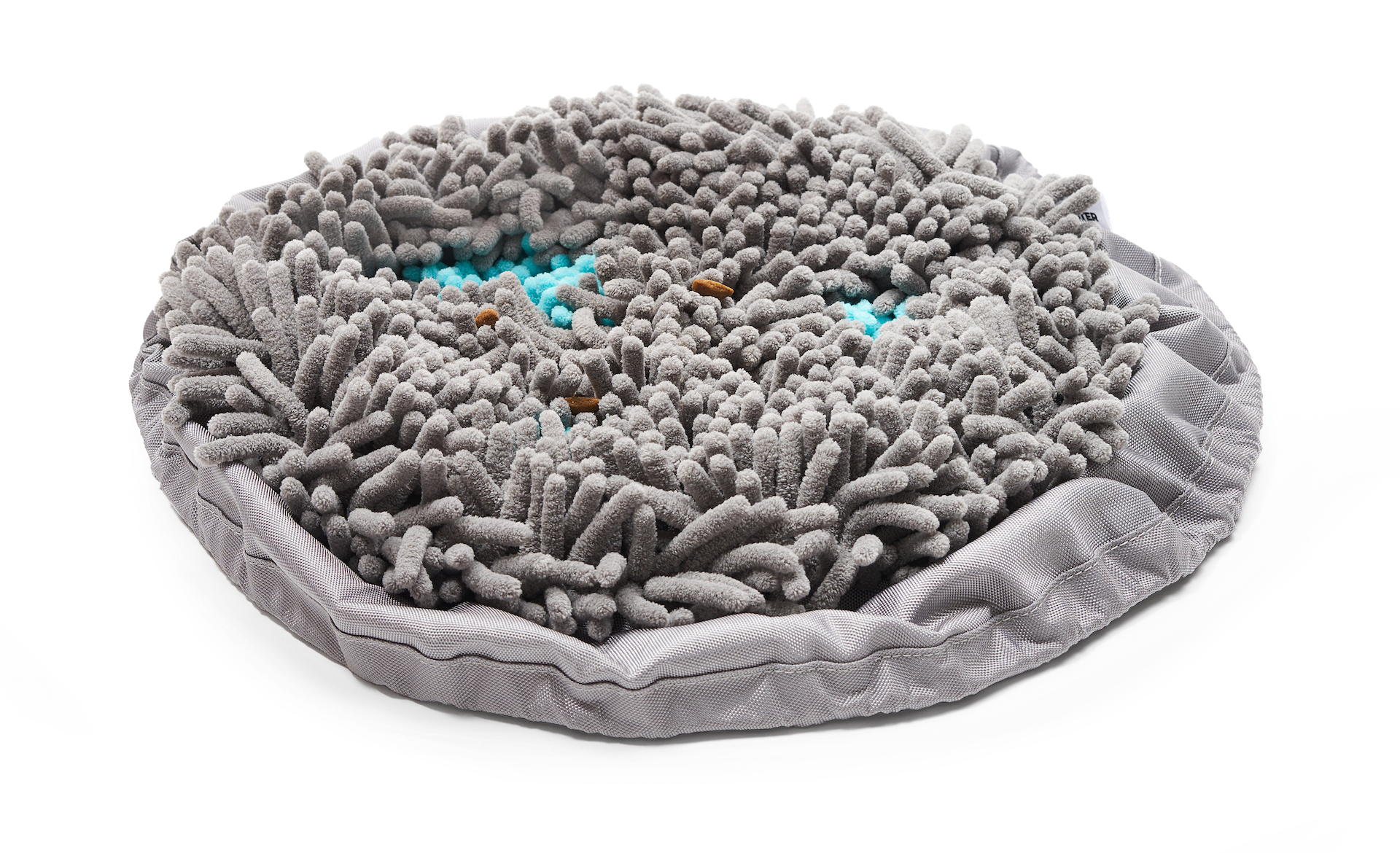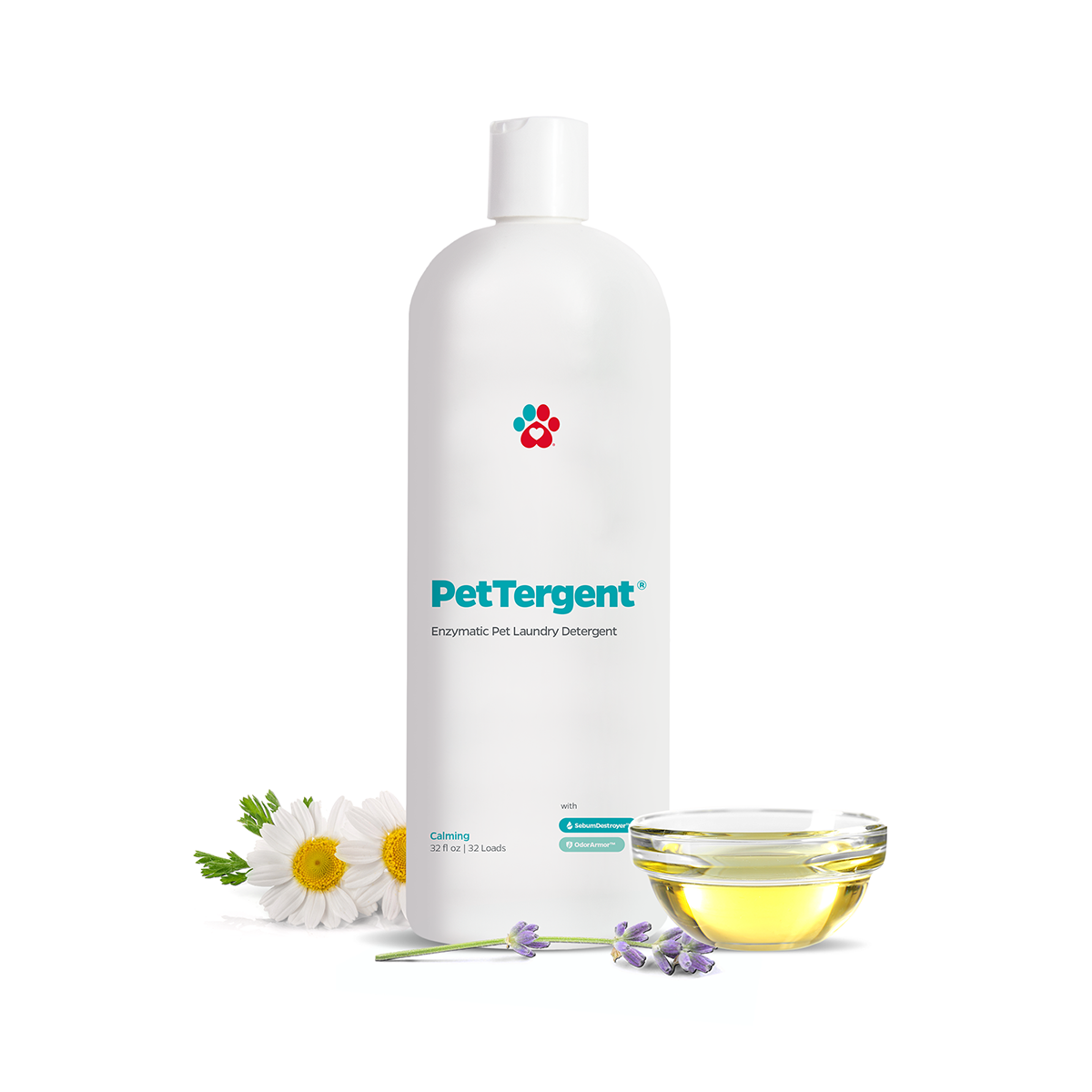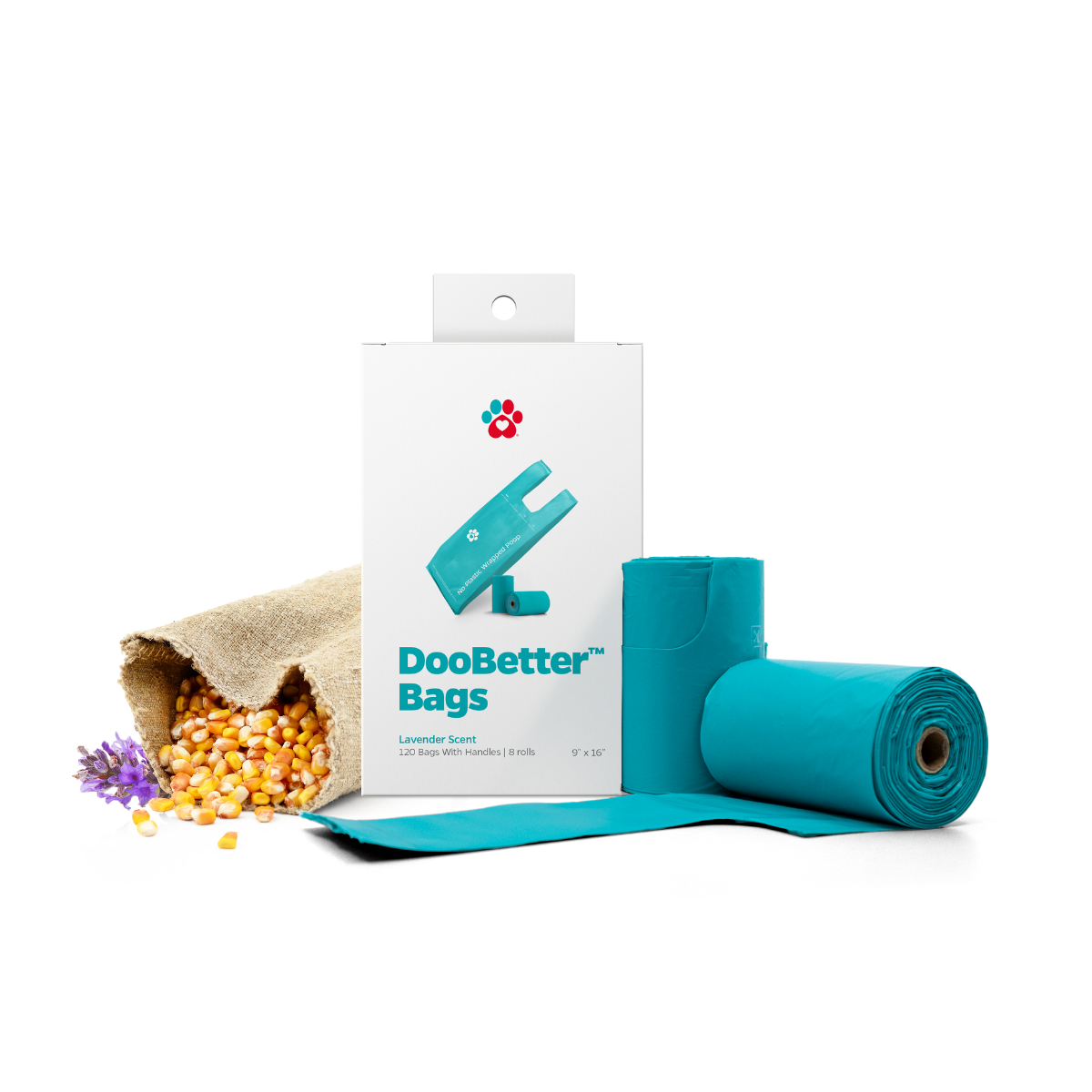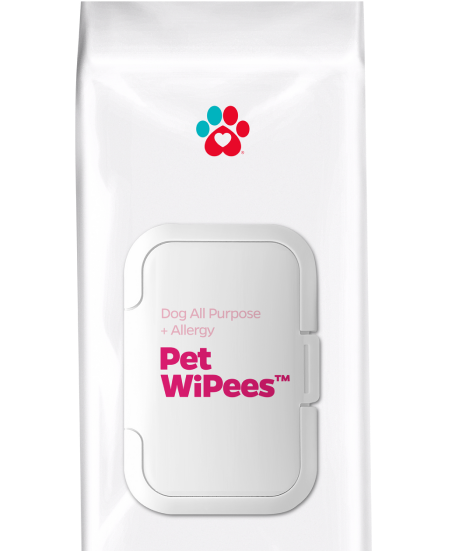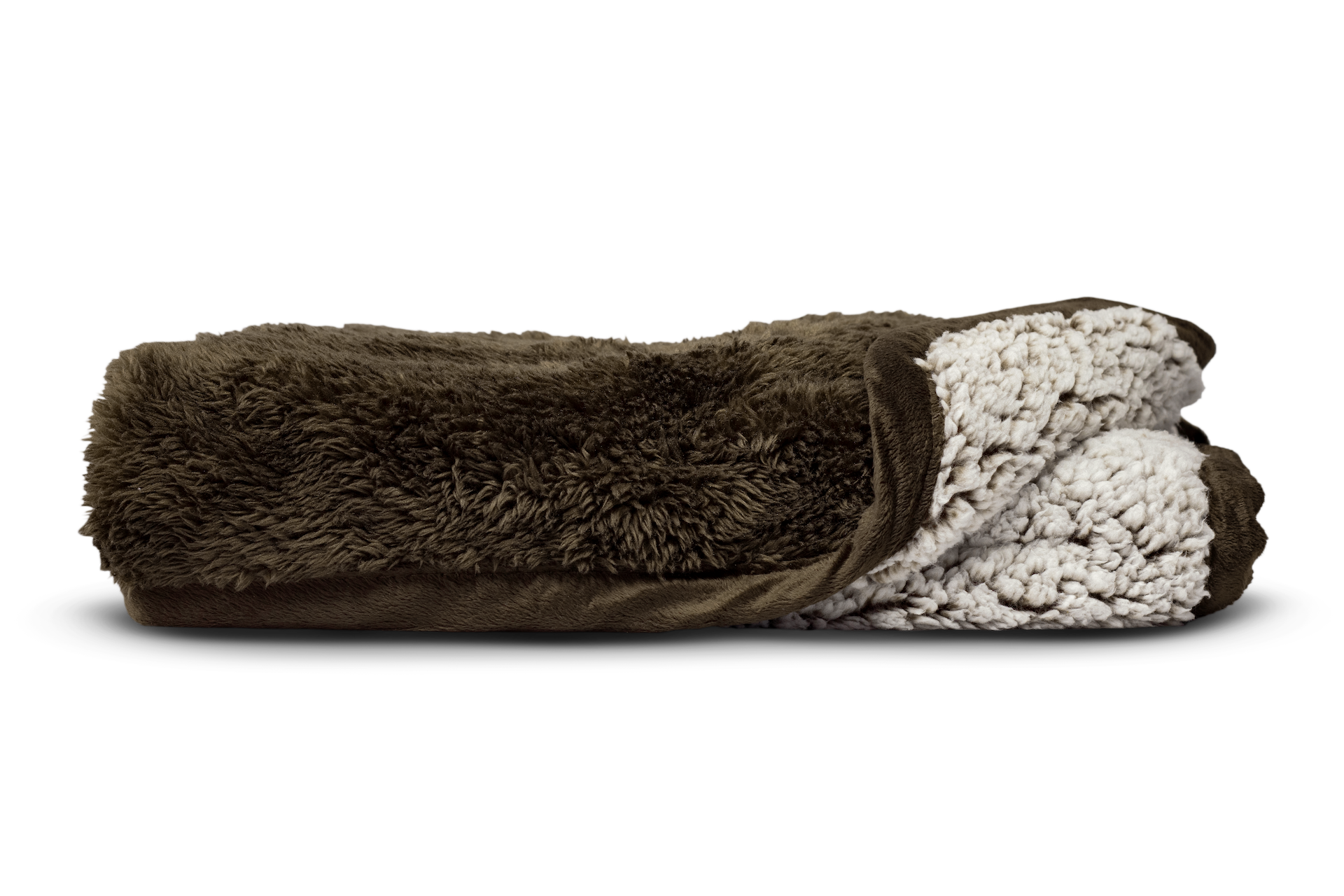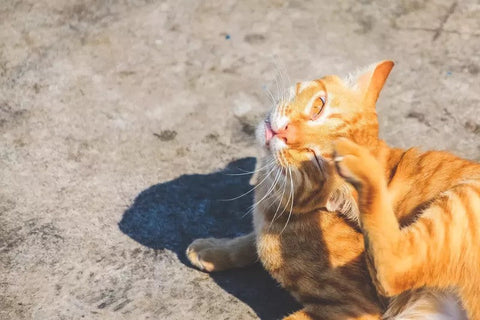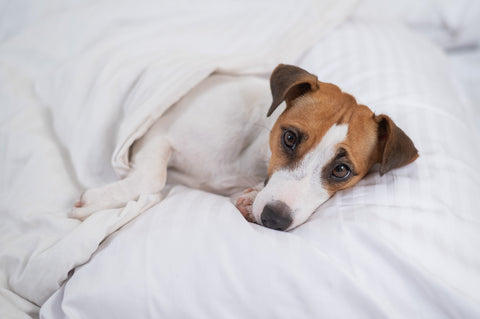Spay incontinence in female dogs is fairly common especially middle-aged and older spayed female dogs. You may assume that spay incontinence is something that happens in old age or as a side-effect of surgery that there is absolutely nothing that can be done about it.
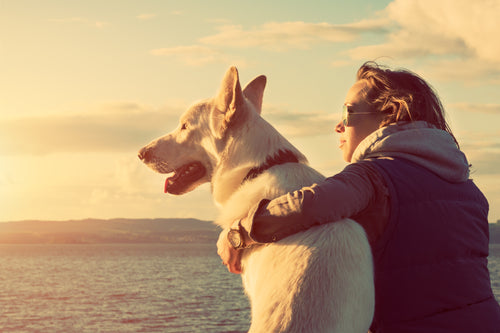
"Urinary incontinence is fairly common in middle-aged and older spayed female dogs."
However, female dog incontinence after surgery can often be a solvable problem - if you know the basics and how to properly manage spay incontinence. Have you noticed your female dog suddenly dribbling urine while walking up a flight of stairs or in her sleep? Have you noticed her suddenly leaking after undergoing spay surgery? Or maybe you see your dog peeing a lot after spay surgery all over your house? It might be that your female dog is experiencing spay incontinence.
What Causes Spay Incontinence in Female Dogs?
Spay incontinence can be caused by many different things. Dog incontinence after surgery can be because of, but not limited to:
- Development of bladder infections, stones, polyps or tumors
- Overflow incontinence - this occurs when your fur-baby is greatly affected by another medical condition, such as diabetes and Cushing’s disease, that causes her to drink excessively
- Spinal cord injury, disease or sudden abnormal developments
- Developmental urinary tract abnormalities, including ectopic ureters and vaginal structures
- And the most common cause, which is a weakened bladder (urethral) sphincters in spayed female dogs, also known as estrogen-responsive or spay incontinence
A dog losing bladder control can happen because after a female dog is spayed, the strength of her urethral sphincter decreases in the years following her surgery. As she gets older, this decrease of strength of the urethral sphincter only worsens. This is so because the decline in the estrogen levels after spaying may cause a decrease in the functions of the urethral sphincter and its supporting tissues. According to studies, roughly about 20% of spayed female dogs will develop incontinence within three years of being spayed.
But as they say, all dogs are different. Large breed dogs are more likely to develop spay incontinence than small dogs. Also, dogs who are spayed before their first heat have a higher chance of developing spay incontinence in female dogs, however, the veterinary community currently believes that spaying before three months of age may increase the potential of its development. To catch it early, you can look out for signs of spay incontinence after surgery.
It’s important to mention that spaying your female dog is very beneficial to her health. Spaying helps prevent uterine infections and breast cancer, which is fatal in about 50 percent of dogs. So, while you may be concerned about potential dog incontinence after surgery, the issue of spay incontinence can often be solved much easier than a more serious disease.
On the brighter side, spay incontinence in dogs is not the only result. Spaying actually offers a lot of benefits for you and your furbaby.
- Spaying reduces the risks of your female dog from acquiring illnesses like mammary gland cancer, pyometra, and infections in the uterus.
- Spaying also saves you from the stress of dealing with male dogs who try all ways to get to your female dog.
- Since spaying no longer puts your dog into heat, you are saved from worrying about your female dog from escaping home to find a mate.
Diagnosing Spay Incontinence in Dogs

If you are noticing your female dog is having more accidents, you may want to take her to her veterinarian to check for spay incontinence. The veterinarian will then perform exams like urinalysis and a urine culture. These exams are important because the urinalysis will uncover any other health issues that may be going on that could be causing your dog to over-consume water.
Your vet may also recommend complete blood work and, depending on your dog’s age, x-rays or ultrasound to make a definitive diagnosis. These will help rule out bladder stones and cancer.
How Do You Treat Spay Incontinence?
Spay Incontinence Medication
Treatment for spay incontinence in female dogs depends greatly on what's causing it. Your vet will be able to provide you with the best plan for dog spay incontinence treatment. Urethral sphincter strength can often be improved with medication. In fact, according to studies, roughly 50 – 60% of incontinent spayed female dogs respond well to estrogen therapy for added urethral sphincter strength.
There are also non-hormonal dog spay incontinence treatments that strengthen the urethra. Phenylpropanolamine (PPA) is one such treatment and about 85 to 90% of spayed female dogs have shown an excellent response to it.
Spay Incontinence Treatment Alternatives
For those dogs who experience adverse side effects to these medications, there are other procedures including collagen or bulking injections around the urethral sphincter, surgical implantation of a urethral occluder and certain bladder and urethral tacking surgeries. Many of these surgeries have severe complications and risky side effects and often supplements and medications are the treatment of choice. Your vet will be able to provide valuable advice on how to treat spay incontinence for your specific dog and suggest treatment options.
As each dog is different and will respond differently to treatments, you and your veterinarian will have to use a trial and error approach to see what works best for your furbaby. Until you find a treatment that works, your best bet is to use Dog Diapers. As you fine-tune your medical game plan of spay incontinence treatment, these will help to keep your home clean, know when and where your pup goes and will save them from the "I'm sorry" tail tuck.
Pet Parents® dog diapers are washable and durable and come in a variety of sizes and colors. Your good girl can rock bold colors like pink and purple or choose stealth mode with the natural, blend-with-the-fur colors of black, grey, and rust. These diapers come in a variety of sizes, from extra small to extra large dog diapers to provide the best fit possible. A snug, comfortable fit will prevent a dog leaking urine all over your furniture, rug, or bed. This way your furbaby can remain comfortable, even if they are experiencing spay incontinence.

Pet Parents® Pawtect® Pads will also be useful if your female dog is experiencing spay incontinence. These are premium, washable and reusable pee pads that are super-absorbent and triple-stitched to prevent your furbaby from shedding it to pieces. These pads also have the StickyPaw™ backing that grips onto your floor so it won’t be moved and tracked all over your house. They can also be placed over your furniture for extra protection.
In this challenging time, it is also a must to always be aware of your dog's nutritional needs. Provide Pet Parents® Dog Multivitamin with a variety of vitamins and nutrients that will help meet your dog's nutritional needs while trying to recover from spay incontinence in female dogs. You can also give Pet Parents® Supplements for Bladder and Kidney Support or your incontinent female. It contains pumpkin seed extract that greatly supports proper bladder muscle function and can help support bladder control for dogs.
Spay incontinence in female dogs can feel like the end of the world for you and your pup, and in these trying times, your fur-baby will never be able to make it through without you.
So as a responsible pet parent, always remember that there are always ways to identify, prevent, and treat it. Spay incontinence treatment will depend on the causes. If you encounter female dog incontinence after spay, your vet will be able to help you find the right path to help with dog incontinence after surgery. Consult your vet for the best plan of action for dog spay incontinence treatment and learn how to best manage spay incontinence. Because even with spay incontinence, you and your dog can live a comfortable, happy life together.
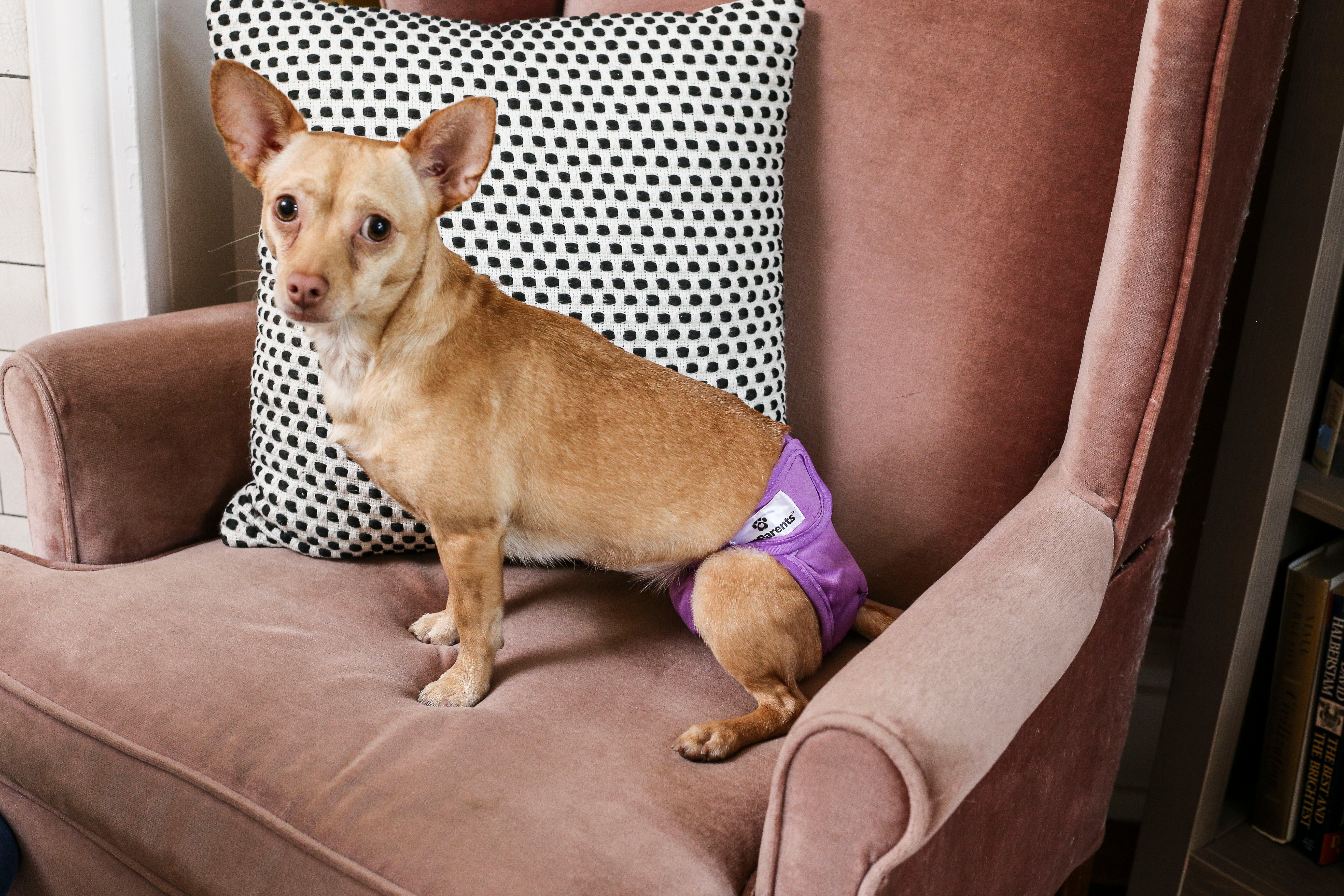
"Roughly 50 – 60% of incontinent spayed female dogs respond well to estrogen therapy"

